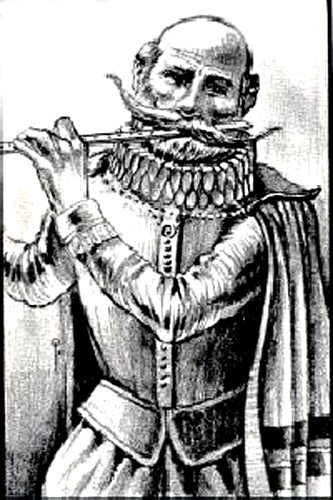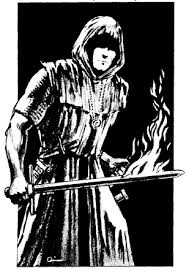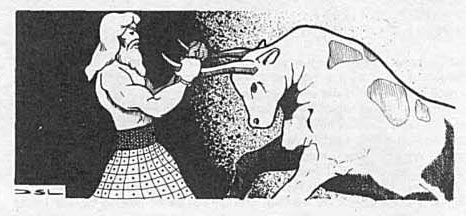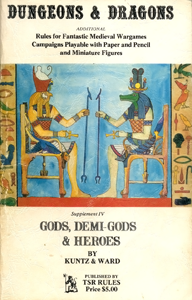One of the original “little brown books” (LBBs) that were published back in the days when all the D&D rulebooks could fit in a little white box, was Gods, Demigods, and Heroes. As the title suggested, it detailed divine beings and powerful mortals from various mythologies and fantasy fiction worlds.
That book was eventually replaced by the AD&D book Deities & Demigods (later infamously re-titled Legends & Lore against the objections of Gary Gygax himself). Although “heroes” was absent from the title, they were certainly represented in the text; from Hiawatha in the American Indian Mythos, to Gilgamesh in the Babylonian, Elric (for those of us lucky enough to have one of the earlier editions, before the Cthulhu and Melnibonéan mythoi were excised), Fafhrd and the Grey Mouser, and on and on.
The problem is, “heroes” are never defined as such in the book. In terms of game mechanics, the only thing we ever learn about them is that they all have saving throws of 3, in all categories, and their AC might not seem right, due to magic. But nothing about what a hero is, or how one is made, or what qualifies one as a hero. Their levels and statistics are no help; while all are relatively high, they’re not consistently above the limits of ordinary mortals.

Things got a little interesting a couple of years later, when Gygax wrote the following in Dragon #71:
When our editors were going over the manuscript for The Land Beyond The Magic Mirror (module X2), the question arose: Just who were Murlynd, Keoghtom, and Heward? I replied that they were “personages” — above the status of important characters, by and large, but not quite demi-gods and certainly not heroes. They are, in fact, quasi-deities, and I have named them such forevermore! In Greyhawk’s World there are quite a number of such, but only Heward, Keoghtom, and Murlynd are currently placed so as to interact with player characters. The inactive list includes Daern, Johydee, Nolzur, Quaal, and Tuerny. Characters of personage status such as Bucknard (NPC), Mordenkainen (my own), Otiluke (NPC), and Tenser (PC), to name but a few, are not as powerful and broadly endowed as are the quasi-deities. … By means of dual-class work, special situations, successful quests, and the completion of defined tasks, the former PCs can be elevated to the new status. … Because the personages of Mordenkainen, Bucknard, et al, are actively used or played in my campaign, I cannot give details of their power and possessions. Suffice it to say that their status is something less than that of the quasi-deities.
Later in that same issue, he continued:
The next example is that of a quasi-deity taken one step further along the
road to greater power — demi-deityhood. This example, Kelanen, happens to be one which I devised (with assistance from Francois Marcela-Froideval). It demonstrates, however, the principle of
advancement of power. The devotion and single-purpose nature of Kelanen is likewise a good model for player characters who desire to develop a “cause” and direct their power along a single path.

With Kelanen being described as “one of the very powerful individuals who might, or might not, be a true deity. Thus he is known as a hero-deity…”
Okay, so let’s unpack where all this leads us, in terms of quantifying the various types of not-quite-god characters.
So if hero-deities are “one step further” than quasi-deities, that gives us:
- Demigod
- Hero-deity
- Quasi-deity
- Ordinary person
We still don’t know where heroes fall on this list. I’m inclined to put them right above ordinary people, but then I would expect to see the labels hero-deity and quasi-deity reversed, to give a smooth flow from hero to deity. But these things aren’t always as smooth as I might personally like. Putting “hero” between quasi-deity and hero-deity doesn’t work either, as the power levels of heroes in Deities & Demigods are below those of the quasi-deities in Dragon and the World of Greyhawk.But heroes aren’t ordinary people, either, because of their special saving throws and possible AC magical hand-waiving.
The relative experience levels of heroes and quasi-deities is somewhat on par (with the exception of the heroes of the Greek mythos, which are uniformly low-powered in terms of level and magic powers, for some reason). Heward, for instance, is a 10th level magic-user, 10th level illusionist, and 20th level bard (40 levels total). Keoghtom is a 14th level cleric, 18th level magic-user, 16th level illusionist, 10th level monk, and 20th level bard (78 levels total!). Compare that to Gilgamesh, who is a 5th level cleric, 5th level druid, 12th level ranger, 10th level magic-user, 11th level monk, and 5th level bard (49 levels total). Lemminkainen is an 8th level druid, 18th level fighter, 10th level magic-user, 15th level illusionist, and 15th level bard (68 levels total).

Where they differ is in their magic items and/or innate magical powers. Gilgamesh has a +3 mace, Lemminkainen has more magic items, but nothing you wouldn’t expect from a mid-high level character. But Keoghtom has a “vast” number of “usual and special magic items and devices”, while Heward has innate magic powers dealing with magic and carries pitch pipes and tuning forks with which he can call forth more magic effects. That seems to be the differentiating factor; heroes and quasi-deities both have ultra-high levels (and multiple classes), but special magic powers are what make quasi-deities, quasi-deities. It seems to be an oversight, but I’d also say the all-threes saving throws would also be applicable to them.
So above ordinary people it is. That leaves us with the following:
- Demigod
- Hero-deity
- Quasi-deity
- Hero
- Ordinary person
With the broad umbrella term “personages” encompassing all of the middle three bullets.
So that leaves us with an implied question. In the World of Greyhawk, we know about personages in the sense of ordinary but high-level characters such as Mordenkainen, quasi-deities like Heward and Murlynd, and hero-deities like Kelenen.
So where are Greyhawk’s heroes? Those high-level personages between “mere” high-level characters like Mordenkainen, and actual quasi-deities like Heward? More to come…
Be sure to check out my Kickstarter for Adventures Great and Glorious, going on right now!










I like this topic! I’ve always enjoyed the nuanced levels, from player character to quasi to demi and so on. It always seemed to give players something to aspire to be that was often out of reach. Like you mentioned, innate powers like psionics is a key factor, which would make sense then that they are rare since it was supposed to be hard to achieve those powers. I always encourage my players to craft unique items and spells to emulate these NPCs because that’s the kind of legacy people apparently remember, not always what adventures they went on. For example, what did Kelanen or Heward specifically do to get that high level, we only know all the cool toys and homes that they have.